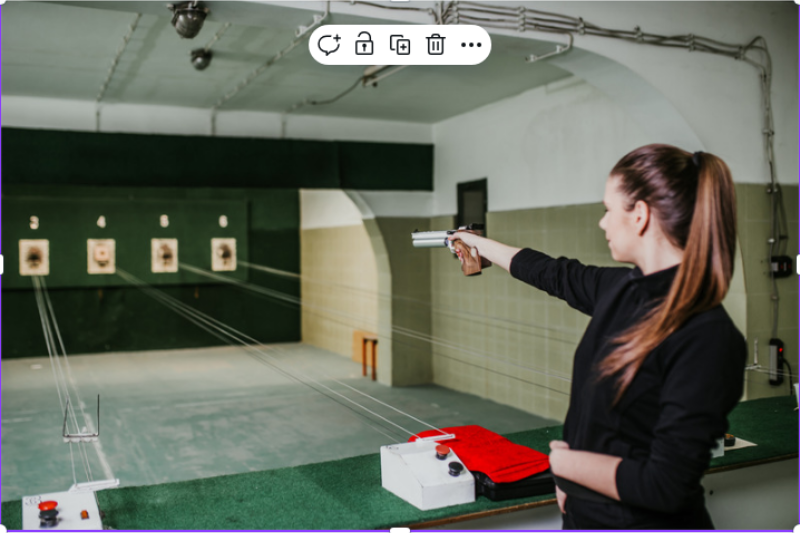In 2025, a nationwide campus safety survey revealed a striking statistic: over 40% of female college students reported feeling unsafe walking alone at night on or near their college campus. While universities have improved security protocols over the years, there’s still a wide gap between perceived safety and real-life readiness—especially when students find themselves alone after dark, waiting for a rideshare, or navigating poorly lit areas between classes, dorms, or off-campus housing.
College is meant to be a time of discovery, independence, and new experiences. You’re building your future—making friends, expanding your mind, and finding your place in the world. But with that freedom comes new responsibilities, especially when it comes to personal safety. Every student deserves to feel confident walking across campus, attending late-night study sessions, or going out with friends—and unfortunately, the reality is that personal safety isn’t always guaranteed by campus security alone.
That’s where non-lethal self-defense tools like stun guns come in. Compact, affordable, and legal in most of California (including for students over 18), stun guns are an increasingly popular option for young adults who want to boost their confidence and take control of their safety—without resorting to lethal weapons. They offer a simple, effective way to create distance, disable an attacker, and buy precious moments to escape and call for help.
The Realities of Campus Safety
College life brings a sense of freedom and adventure—but it also presents real safety challenges that many students aren’t fully prepared to handle. Whether you're studying late in the library, heading to a party, or taking a rideshare home after a night out, it's not uncommon to feel that lingering unease when walking alone or navigating unfamiliar spaces. And the truth is, many of these scenarios come with risks that are often underestimated.
Common Campus Safety Concerns:
- Late-night walks between dorms and libraries: Whether you're returning from a study session or a campus job, poorly lit walkways and empty paths can make students feel exposed and vulnerable.
- Rideshare-related incidents: While Uber and Lyft have become convenient transportation staples, there have been growing concerns about driver vetting, rider impersonation, and assaults—especially in college towns.
- Off-campus housing break-ins: Many students live off-campus in homes or apartments with minimal security features, making them more susceptible to theft or worse.
- Parties and social events with potential for escalation: Crowded environments can quickly shift from fun to unsafe, particularly when alcohol, peer pressure, or unfamiliar guests are involved.
Why Students Often Feel Unprepared:
- Lack of formal self-defense education: Most students have never been taught how to respond to danger, recognize early warning signs, or use non-lethal defense tools like pepper spray or stun guns effectively.
- Limited campus security coverage: While many schools offer emergency phones and campus patrols, these resources often aren’t readily available where or when students actually need them.
- Fear of using “lethal” weapons: Understandably, most students aren’t comfortable carrying anything that could cause lasting harm. But without accessible non-lethal options, they’re left with little to fall back on if something goes wrong.
What Is a Stun Gun and How Does It Work?
Stun Gun vs. Taser vs. Firearm
Let’s clear up a common misconception: a stun gun is not a taser, and it’s definitely not a firearm. A stun gun is a handheld, non-lethal self-defense tool that delivers a high-voltage electric shock on direct contact. It’s designed to temporarily incapacitate an attacker by interfering with their muscle control. Unlike a taser, which shoots probes from a distance, a stun gun must make physical contact with the body to be effective.
No bullets. No long-range projectiles. No lethal force. Just quick, effective, and non-lethal protection.
How a Stun Gun Works
When activated, a stun gun emits an electrical charge between two prongs at the end of the device. If pressed against an attacker, it sends a high-voltage, low-amperage shock through the skin and into the muscles. Here’s what that does:
- Disrupts Muscle Control: The electric current interferes with the body’s neuromuscular system, causing temporary disorientation and muscle fatigue.
- Creates an Opportunity to Escape: While it doesn’t cause long-term harm, it can buy you several crucial seconds to get away and call for help.
- Pain Compliance: The immediate discomfort also acts as a powerful deterrent—most aggressors will think twice after hearing or feeling the shock.
Legal Use in California
In the state of California, stun guns are legal for self-defense purposes if you are over the age of 18 and not a convicted felon. You do not need a permit to carry one, and you can purchase them for personal protection without going through the same regulations as firearms.
That said, some college campuses have specific rules about carrying stun guns or similar devices. While state law may permit their use, it’s critical to check your university’s policies—especially if you live in on-campus housing or attend events with security screening. Contact your campus safety office or review your student handbook to ensure you’re in full compliance.
Why a Stun Gun Is a Smart Option for College Students
When it comes to personal safety on campus, most students want something that’s effective, easy to use, and non-lethal. That’s exactly why stun guns have become a go-to self-defense tool for college students across California. They offer peace of mind without the risks associated with firearms or the intimidation of carrying a weapon that could cause lasting harm. Here’s why stun guns just make sense:
Non-Lethal and Safe
One of the biggest advantages of a stun gun is that it’s designed to stop an attacker without causing permanent injury. Unlike pepper spray, which can drift or affect bystanders, stun guns deliver a targeted jolt that disables an attacker without endangering others—or the person using it. It’s a powerful self-defense option that keeps both legal and emotional consequences low.
Simple to Use – Even Under Pressure
Stun guns don’t require extensive training to operate. With basic instruction and hands-on practice, you can learn how to deploy it quickly and effectively, even in high-stress situations. Most models involve just a safety switch and a trigger—making them easy to activate in seconds if needed.
Portable and Discreet
Today’s stun guns are designed with college life in mind. Many are small enough to fit on a keychain, in your backpack, or tucked into a small purse, making them easily accessible without being bulky or intimidating. You don’t need to carry a giant piece of gear—just something that fits in the palm of your hand.
Visibly Deterrent
Sometimes, just showing a stun gun is enough to make a would-be attacker think twice. The sound and visible electric arc can be intimidating on their own—acting as a psychological deterrent before a situation escalates.
Confidence Booster
Perhaps most importantly, carrying a stun gun (and knowing how to use it) gives students a strong sense of control over their personal safety. It’s not about being paranoid—it’s about being prepared. That sense of empowerment can reduce fear, increase awareness, and help students feel safer navigating campus life.
Empowerment Starts with Preparation
Personal safety on campus isn't just about reacting to danger—it's about being ready before it happens. When students are equipped with tools like stun guns and the knowledge to use them properly, they gain more than just a way to defend themselves—they gain confidence. Confidence to walk across campus at night, to attend social events, and to live their lives without the constant cloud of “what if.”
With the right training, students learn to recognize threats, avoid danger when possible, and act decisively when they must. At Guardian Training Center, we believe in giving students the skills to not just survive—but to thrive. Because safety isn’t about fear. It’s about freedom.
You don’t have to wait for help. You don’t need to rely on someone else to protect you. You can be your own first responder.
📍 Guardian Training Center
2333 Verna Court, San Leandro, CA
📞 510-626-4940 📧 info@guardiantc.com 🔗 Contact us here
📆 View upcoming classes
📲 Instagram | LinkedIn | Facebook






.svg)